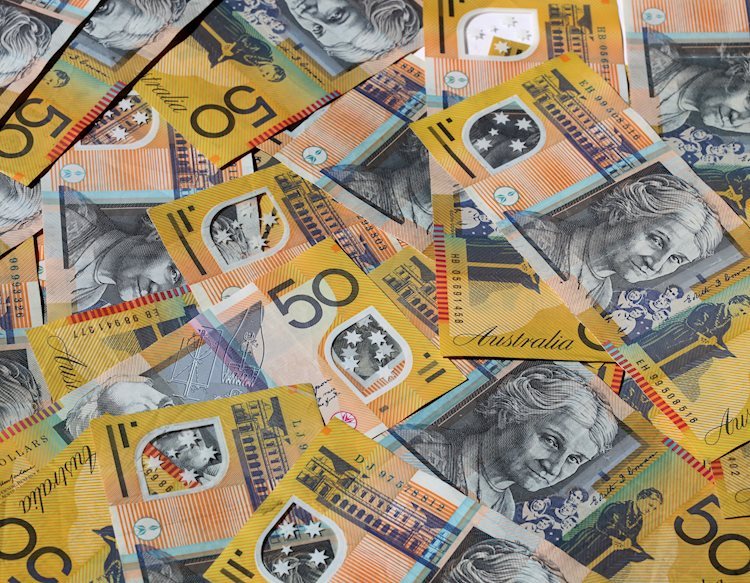- AUD/USD gains on soft US data and RBA’s hawkish outlook.
- RBA Bullock reiterates hawkish stance, signaling no near-term rate cuts.
- Monetary policy diveargence favors the Aussie as US data softens and RBA remains hawkish.
The AUD/USD pair traded in a tight range on Thursday but tallied daily gains after the USD was seen weak after mixed US data.
The Australian economy’s uncertain prospects and the Reserve Bank of Australia’s (RBA) aggressive stance on interest rates have led to a shift in market expectations. However, the bank hasn’t yet embraced cuts in the near term.
Daily digest market movers: Australian Dollar gains slightly after trade figures and hawkish RBA
- Australian exports rose 0.7% MoM and 1.4% YoY in July, while imports fell by 0.8% MoM and 3.0% YoY.
- Exports to China slumped significantly in July, with coal and iron ore prices continuing to decline.
- On Thursday, RBA Governor Bullock maintained a hawkish stance, reiterating that the Board does not expect to cut rates in the near term.
- Across the Pacific, US labor market data disappointed, while ISM Services PMI figures helped the USD recover some losses.
- Monetary policy divergence continues to favor the Aussie, with RBA cash rate futures pricing in a high probability of a 25 bps cut by December.
AUD/USD technical outlook: Indicators flash mixed signals, overall outlook remains positive
On the daily chart, the Relative Strength Index (RSI) points up while the Moving Average Convergence Divergence (MACD) prints a red bar, and both flash mixed signals. However, with the pair above the Simple Moving Average (SMA), the overall outlook is positive, with the pair set to retest the zone above 0.6780.
Central banks FAQs
Central Banks have a key mandate which is making sure that there is price stability in a country or region. Economies are constantly facing inflation or deflation when prices for certain goods and services are fluctuating. Constant rising prices for the same goods means inflation, constant lowered prices for the same goods means deflation. It is the task of the central bank to keep the demand in line by tweaking its policy rate. For the biggest central banks like the US Federal Reserve (Fed), the European Central Bank (ECB) or the Bank of England (BoE), the mandate is to keep inflation close to 2%.
A central bank has one important tool at its disposal to get inflation higher or lower, and that is by tweaking its benchmark policy rate, commonly known as interest rate. On pre-communicated moments, the central bank will issue a statement with its policy rate and provide additional reasoning on why it is either remaining or changing (cutting or hiking) it. Local banks will adjust their savings and lending rates accordingly, which in turn will make it either harder or easier for people to earn on their savings or for companies to take out loans and make investments in their businesses. When the central bank hikes interest rates substantially, this is called monetary tightening. When it is cutting its benchmark rate, it is called monetary easing.
A central bank is often politically independent. Members of the central bank policy board are passing through a series of panels and hearings before being appointed to a policy board seat. Each member in that board often has a certain conviction on how the central bank should control inflation and the subsequent monetary policy. Members that want a very loose monetary policy, with low rates and cheap lending, to boost the economy substantially while being content to see inflation slightly above 2%, are called ‘doves’. Members that rather want to see higher rates to reward savings and want to keep a lit on inflation at all time are called ‘hawks’ and will not rest until inflation is at or just below 2%.
Normally, there is a chairman or president who leads each meeting, needs to create a consensus between the hawks or doves and has his or her final say when it would come down to a vote split to avoid a 50-50 tie on whether the current policy should be adjusted. The chairman will deliver speeches which often can be followed live, where the current monetary stance and outlook is being communicated. A central bank will try to push forward its monetary policy without triggering violent swings in rates, equities, or its currency. All members of the central bank will channel their stance toward the markets in advance of a policy meeting event. A few days before a policy meeting takes place until the new policy has been communicated, members are forbidden to talk publicly. This is called the blackout period.

